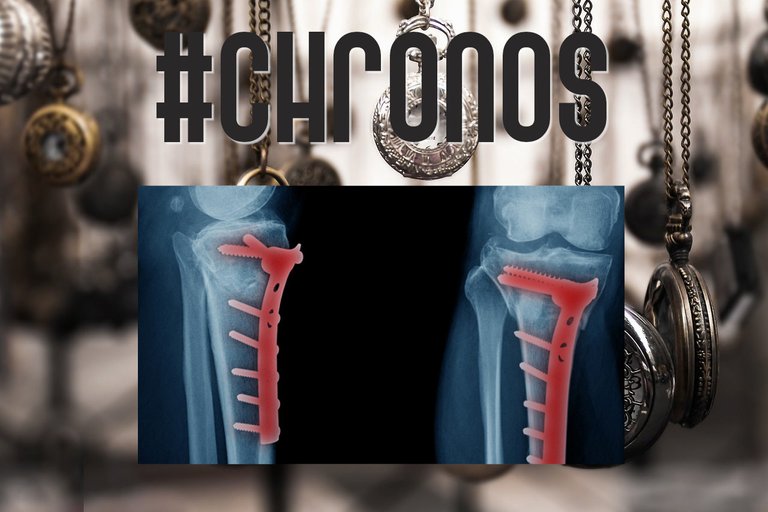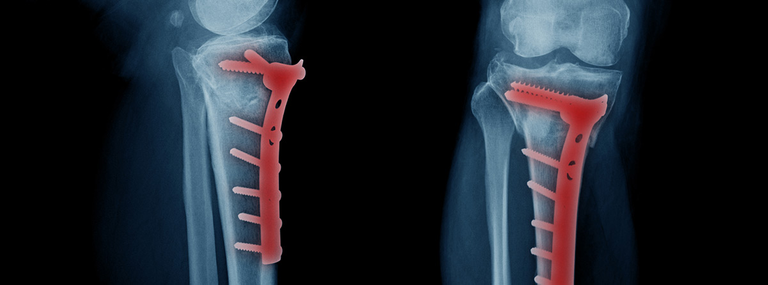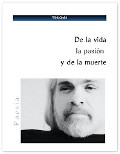2008 marcó un cambio en mi forma de vida con un primer accidente de moto que me produjo una fractura de fémur. Cuatro años más tarde (¡mira, que uno no aprende!) otro accidente me trajo una nueva fractura, esta vez en la tibia. Ambas fueron quirúrgicas y requirieron de la implantación de láminas metálicas. Pero aunque acabo de afirmar que "uno no aprende", es mentira, cuando uno está bien ubicado en la vida, uno siempre saca provecho hasta de las cosas malas y aprende de cada situación.
Esta experiencia no fue diferente y a pesar de todo lo malo, han sido grandes las experiencias y los aprendizajes. Hoy traigo la primera parte de dos historias que contaré y que tienen que ver con eso, con las vivencias positivas, aprendizajes o como se les quiera llamar.
¡Espero que resulte grata la lectura y si deja alguna enseñanza, pues me sentiré más que satisfecho!
2008 marked a change in my way of life with a first motorcycle accident that resulted in a fractured femur. Four years later (look, you never learn!) another accident brought me a new fracture, this time in the tibia. Both were surgical and required the implantation of metal plates. But although I just stated that "one does not learn", it is a lie, when one is well placed in life, one always takes advantage of even the bad things and learns from every situation.
This experience was no different and in spite of all the bad things, the experiences and lessons learned have been great. Today I bring the first part of two stories that I will tell and that have to do with that, with the positive experiences, learning or whatever you want to call them.
I hope it is pleasant reading and if it leaves some teaching, well, I will feel more than satisfied!
English version below!

Luego de dos accidentes de moto había yo quedado con una placa metálica en el fémur y otra en la tibia, limitación para doblar mi pierna izquierda y muchas molestias en la rodilla. Uno de los traumatólogos ya me había anunciado que yo era un perfecto candidato para una pronta implantación de prótesis en esa rodilla.
Con el segundo accidente la cama se convirtió en mi estar permanente durante casi tres meses, tiempo más que suficiente para perder todas las condiciones musculares, y vaya que es impresionante lo rápido que se desaparecen todos esos músculos y lo que cuesta recuperarlos.
Después de la etapa más delicada, vino el retomar, primero, las muletas y poco a poco ir pasando al bastón. Afortunadamente durante todo ese período disfruté del excelente servicio que ofrecen las Salas de Rehabilitación Integral (SRI) que tengo cerca de mi casa, donde me ofrecían la terapia necesaria para la recuperación, excelentemente bien llevada y controlada por médicos y fisioterapeutas.
Pero las secuelas y molestias no son pocas después de dos accidentes de la naturaleza que tuve y no podía evitar los dolores al caminar, así como el renqueo, que definió mi forma de caminar a partir de ese momento, lo que a modo de broma suelen catalogar como “caminar en punto y coma”, con un pequeño arrastre en el pie.
En ese tiempo estaba viniendo a mi casa un fisioterapeuta para atender a mi suegro, a quien le habían prescrito atención especial por cuestiones de salud y de edad. Gerardo —que así se llama el terapeuta— venía una par de veces por semana y lo hizo durante mucho tiempo, por lo cual se convirtió en alguien cercano. Tanto así que las más pequeñas de la familia pensaban que era parte de la familia.
Como él sabía que yo estaba en tratamiento, no solía inmiscuirse en mis terapias y solo se limitaba a preguntarme cómo me sentía.
En una ocasión se me quedó viendo y detallando mi forma de caminar, luego me preguntó si me dolía al caminar. Yo le respondí que sí, que claro que me dolía y molestaba la pierna al caminar. Luego me pidió que tratara de caminar “normal”, es decir que evitara el renqueo y que disimulara mi afección. Así lo hice. Nuevamente me preguntó si me dolía y contesté afirmativamente. Entonces me dijo:
— Si te duele al caminar de cualquiera de las dos manera ¿por qué no caminas de la segunda forma, que se ve mejor???
Esto pudiera parecer un chiste, pero resultó ser una lección de vida, pues pude comprobar que caminando “bien”, tenía mejor postura y aunque al principio me resultaba bastante doloroso, pronto los músculos se adaptaron y desde entonces es poco perceptible el hecho de que mantengo las dos placas metálicas en la pierna y que sigo teniendo una limitación. Muchas personas ni siquiera son capaces de detectar fallas en mi forma de caminar.
Y cuando digo que fue una “lección de vida” es porque ese mismo principio aplica para muchísimas cosas en nuestras vidas, muchas veces preferimos “renquear” que hacer el esfuerzo de enderezarnos y lo que hacemos es profundizar nuestras fallas, porque al no intentar superarlas se van afianzando, reafirmando en cada uno de nosotros.
Estoy completamente convencido que muchos de mis logros que he tenido desde entonces (en todos los niveles), se deben a entender que siempre es mejor hacer el esfuerzo por “caminar bien”. Así que cada vez que te veas “cojeando”, haz el esfuerzo y camina bien, que eso se ve mejor y así serán los resultados.


English version
After two motorcycle accidents I had been left with a metal plate in my femur and another one in my tibia, limitation to bend my left leg and a lot of discomfort in my knee. One of the orthopedic surgeons had already told me that I was a perfect candidate for an early implantation of a prosthesis in that knee.
With the second accident the bed became my permanent stay for almost three months, more than enough time to lose all muscle conditions, and it is impressive how fast all those muscles disappear and how hard it is to recover them.
After the most delicate stage, came the return, first, to the crutches and little by little to go to the cane. Fortunately, during all this period I enjoyed the excellent service offered by the Integral Rehabilitation Rooms (SRI) near my home, where I was offered the necessary therapy for recovery, excellently carried out and controlled by doctors and physiotherapists.
But the sequels and discomfort are not few after two accidents of nature that I had and I could not avoid the pains when walking, as well as the limping, which defined my way of walking from that moment on, which as a joke is usually catalogued as "walking in semicolon", with a little dragging in the foot.
At that time a physiotherapist was coming to my house to attend my father-in-law, who had been prescribed special attention due to health and age issues. Gerardo -that's the therapist's name- came a couple of times a week and did it for a long time, so he became close to my family. So much so that the younger members of the family thought he was part of the family.
Since he knew I was in treatment, he didn't usually interfere in my therapies and only asked me how I was feeling.
On one occasion he kept looking at me and detailing the way I was walking, then he asked me if it hurt when I walked. I answered yes, of course my leg hurt and bothered me when I walked. Then he asked me to try to walk "normally", that is, to avoid limping and to disguise my condition. I did so. Again he asked me if it hurt and I answered in the affirmative. Then he said to me:
- If it hurts to walk either way why don't you walk the second way, which looks better????
This might seem like a joke, but it turned out to be a life lesson, because I could see that walking "well", I had better posture and although at first it was quite painful, soon the muscles adapted and since then it is hardly noticeable the fact that I keep the two metal plates in my leg and that I still have a limitation. Many people are not even able to detect flaws in my walking.
And when I say that it was a "life lesson" is because that same principle applies to many things in our lives, many times we prefer to "limp" than to make the effort to straighten ourselves and what we do is to deepen our faults, because by not trying to overcome them they become entrenched, reaffirming in each one of us.
I am completely convinced that many of my achievements that I have had since then (at all levels), are due to understanding that it is always better to make the effort to "walk right". So every time you see yourself "limping", make the effort and walk well, that looks better and so will be the results.

Este texto pertenece a mi serie #Chronos. Puedes leer más sobre la misma en Mis crónicas literarias. Si es de tu agrado este estilo y quieres sumarte a la creación de crónicas literarias, te invito a usar la etiqueta #chronos para la misma.
This writing is part of my series #Chronos. You can read more about it on My literary chronicles. If you like this style and want to join the creation of literary chronicles, I invite you to use the hashtag #chronos for it.

Descarga el poemario de @Ylich"De la vida, la pasión y de la muerte"¡Haz clic aquí! |  |
|---|

If you don't have an account at Hive yet, I invite you to read my post My Hive Testimony || Mi testimonio Hive
Si aún no tienes cuenta en Hive te invito a leer mi publicación My Hive Testimony || Mi testimonio Hive

Wow, me va a ser muy útil ese consejo, gracias por compartir su experiencia.
¡Pues sería maravilloso saber que este texto pueda de verdad ayudar a alguien más! ❤️
The rewards earned on this comment will go directly to the person sharing the post on Twitter as long as they are registered with @poshtoken. Sign up at https://hiveposh.com.
Esta es una tremenda narrativa y una enorme lección que lo deja a uno reflexionando...
Muchas gracias 🙏
¡Muchas gracias a ti por leer y comentar!
Tremenda lección con la que comienzo este domingo 13, sé que no se me olvidará y la pondré en práctica o la comentaré cuando deba, porque creo que tiene mucha lógica y es aplicable a distintas facetas de nuestra vida; hacer como si de verdad estamos bien es asumir el lado positivo de la vida, renquear es quedarnos en el dolor visible y acostumbrarnos a él. Si no va a tener solución lo mejor es seguir adelante.
Saludos cordiales. Feliz domingo
¡Mejor no lo pudiste resumir, es exactamente eso! ¡Muy bien dicho!